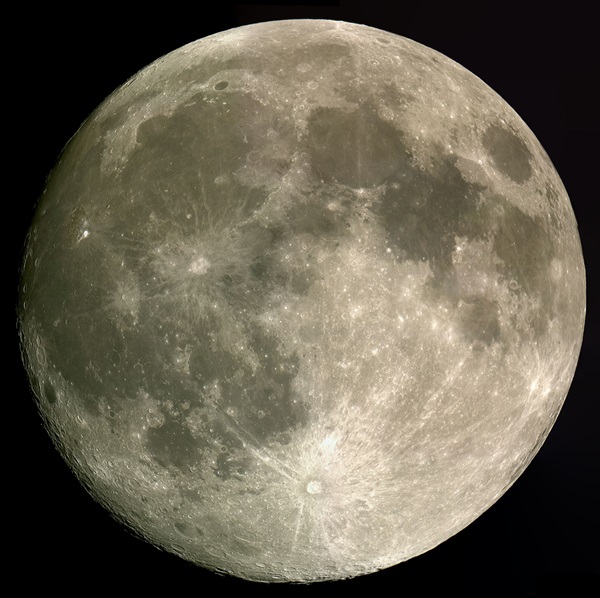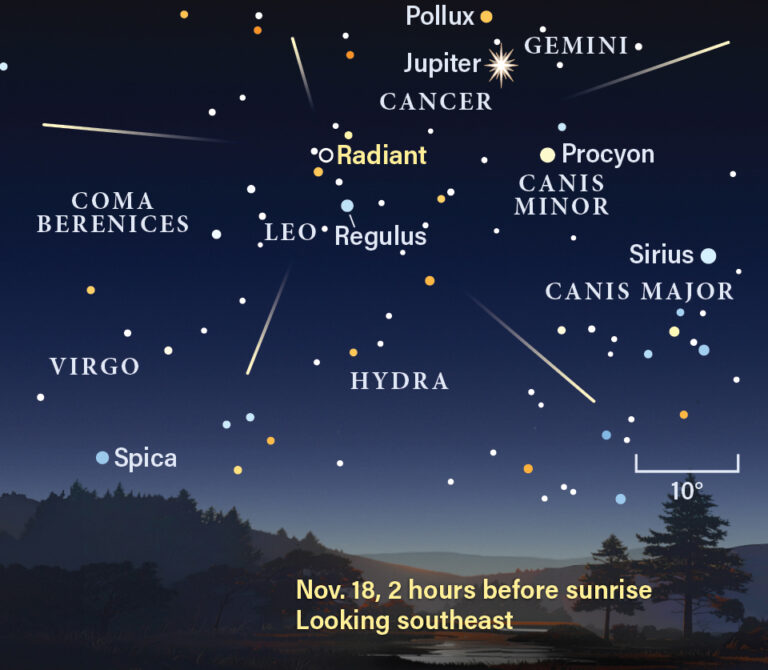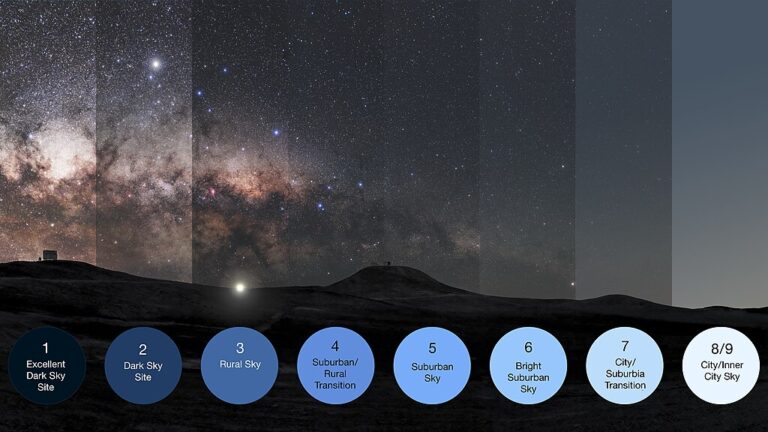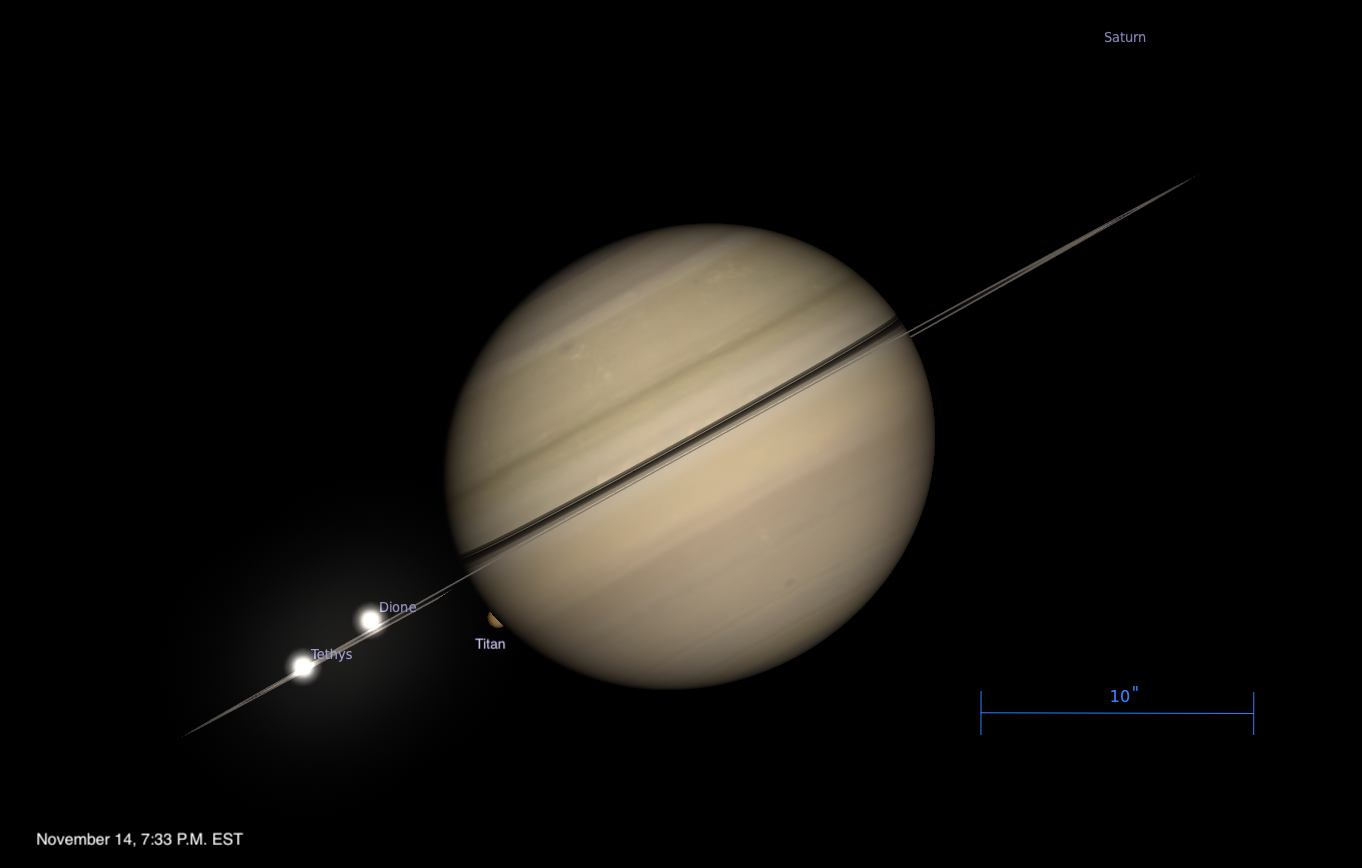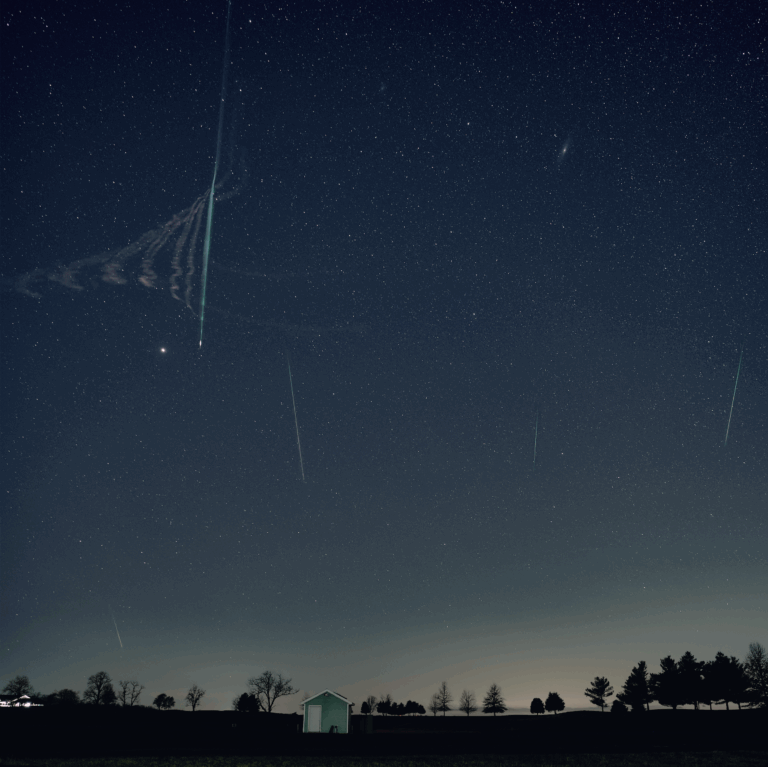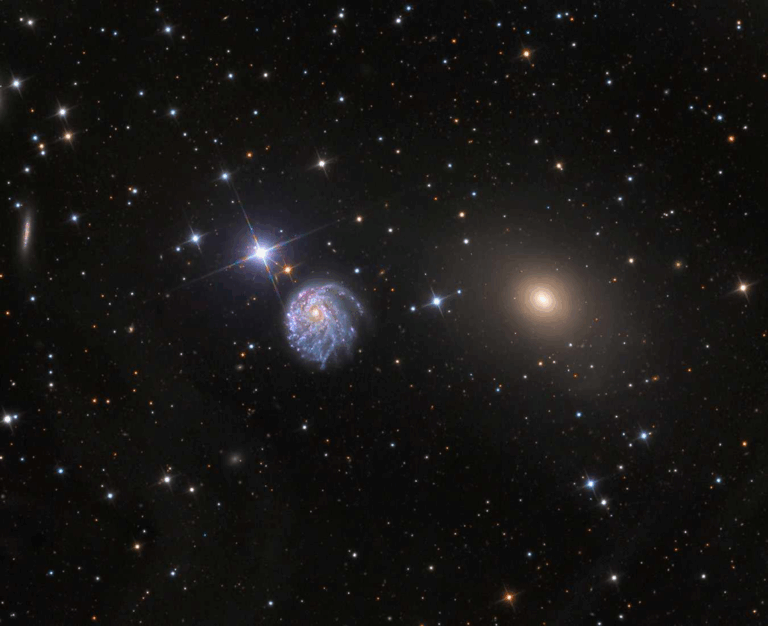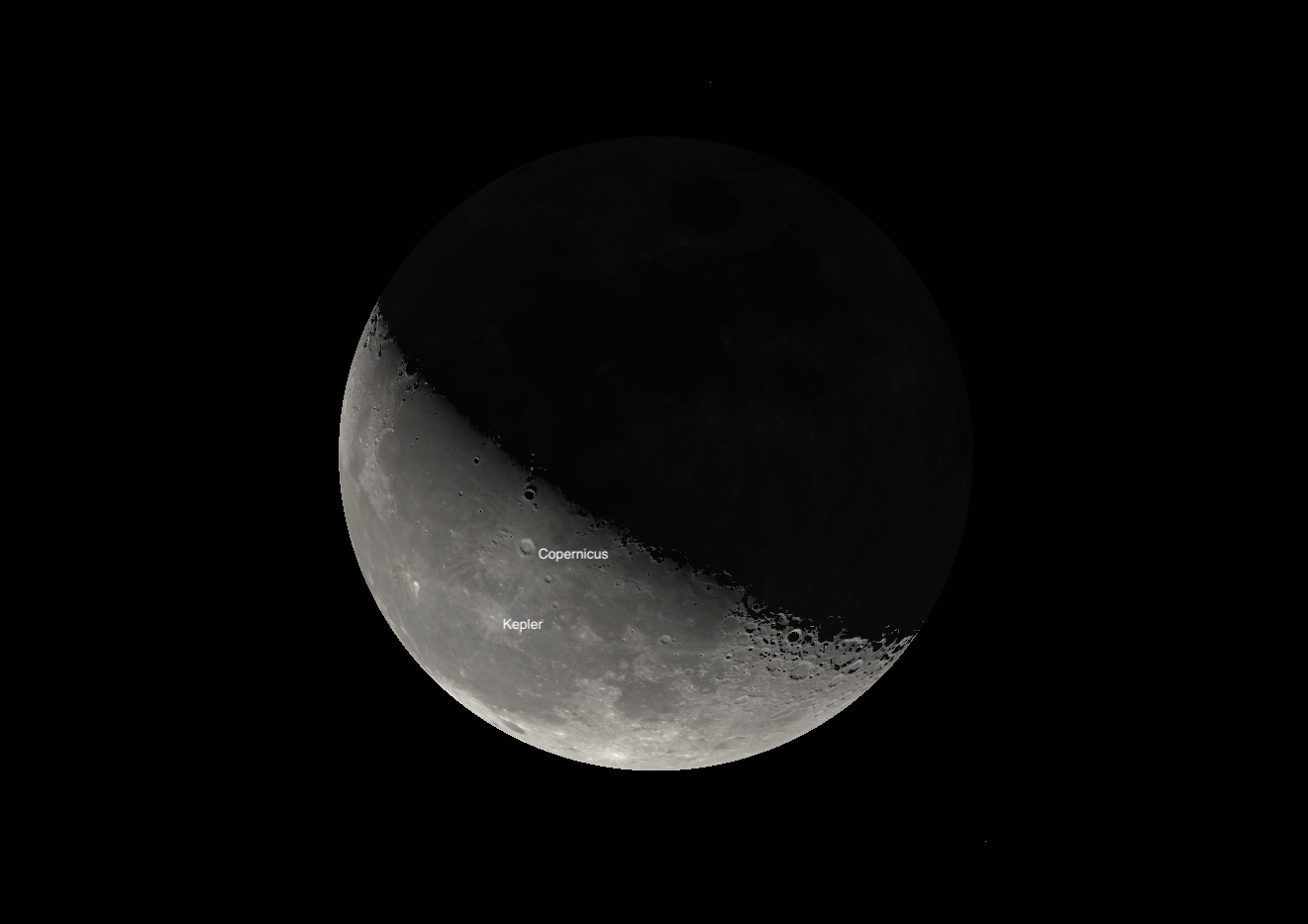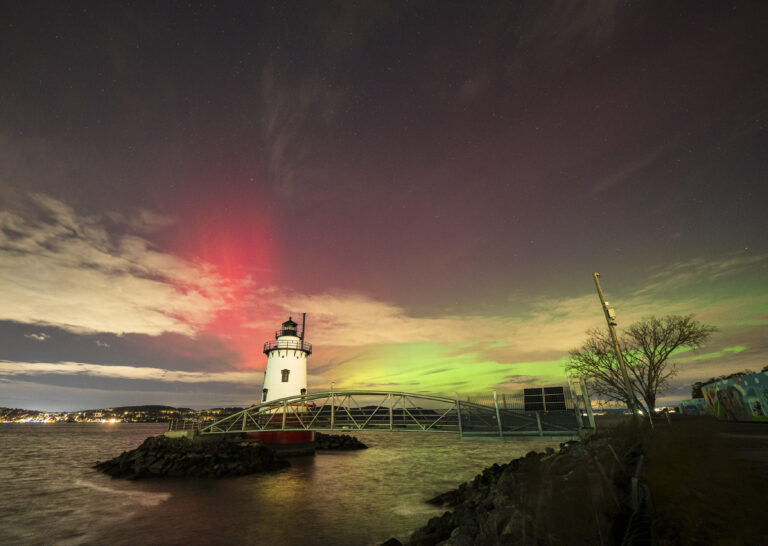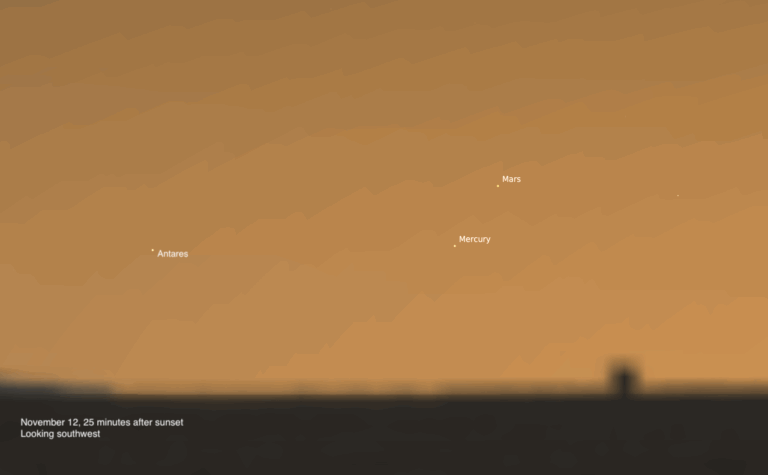Key Takeaways:
A lone bright star now hangs low in the south during early evening. First-magnitude Fomalhaut — often called “the Solitary One” — belongs to the constellation Piscis Austrinus the Southern Fish. From mid-northern latitudes, it climbs 20° above the horizon at its best. How solitary is Fomalhaut? The nearest 1st-magnitude star to it, Achernar at the southern end of Eridanus the River, lies some 40° away.
Saturday, December 7
The variable star Algol in Perseus reaches minimum brightness at 7:07 p.m. EST, when it shines at magnitude 3.4. If you start watching it after darkness falls this evening, you can see it more than triple in brightness, to magnitude 2.1, over the course of a few hours. This eclipsing binary star runs through a cycle from minimum to maximum and back every 2.87 days. Algol appears in the northeastern sky after sunset and passes nearly overhead around 10 p.m. local time.
Sunday, December 8
Although people in the Northern Hemisphere won’t experience the shortest day of the year for another two weeks (at the winter solstice December 21), those at 40° north latitude will see the Sun set earlier today than at any other time this year. Tomorrow’s sunset will arrive about two seconds later and, by the solstice, our star will set three to four minutes later than today. The date of earliest sunset depends on latitude — the farther north you live, the closer it occurs to the solstice.
Monday, December 9
Uranus reached opposition and peak visibility in late October, but it remains a tempting target in December. The outer planet appears in the southeastern sky after darkness falls and climbs highest in the south around 9 p.m. local time. The magnitude 5.7 world lies in southwestern Aries the Ram, near that constellation’s border with Pisces the Fish and Cetus the Whale. Although Uranus shines brightly enough to glimpse with the naked eye from a dark site, you’ll need binoculars to locate it this week with a gibbous Moon sharing the sky. The closest guide star is magnitude 4.4 Xi1 (ξ1) Ceti, which lies 4° to the southeast. A telescope reveals Uranus’ disk, which spans 3.7″ and shows a distinct blue-green hue.
Tuesday, December 10
Venus gleams in the southwestern sky after sunset. The brilliant planet stands out just a half hour after sunset, when it appears 15° above the horizon. Wait another 30 minutes and you should see magnitude 0.6 Saturn just 1.8° to Venus’ north (upper right). Although magnitude –3.9 Venus stands out to the naked eye, binoculars deliver the best views of the pretty conjunction. Target the planets individually through a telescope and you’ll see Venus’ 12″-diameter disk and 87-percent-lit phase, as well as Saturn’s 15″-diameter globe surrounded by a ring system that spans 35″.
The nearly Full Moon sits among the background stars of Taurus the Bull early this evening, just west of the Hyades star cluster. As the night wears on, Earth’s only natural satellite slides through the northern fringes of this V-shaped star group. The conjunction affords a good opportunity to witness the Moon’s motion.
Full Moon officially arrives at 12:12 a.m. EST tomorrow morning (9:12 p.m. PST this evening), but it looks completely illuminated all night. You can find it rising in the east around sunset and peaking high in the south just before midnight. It dips low in the west by the time morning twilight starts to paint the sky. The Moon resides in the eastern part of Taurus the Bull throughout the night.
Thursday, December 12
Ruddy Mars grows more prominent before dawn with each passing week. The Red Planet now rises around 4:30 a.m. local time and climbs nearly 20° above the southeastern horizon an hour before sunrise. Mars glows at magnitude 1.7, which is a full magnitude brighter than any of the background stars belonging to its host constellation, Libra the Scales. This morning, the planet stands just 13′ north of the 3rd-magnitude double star Zubenelgenubi (Alpha [α] Librae). Unfortunately, a telescope doesn’t add much to the view, revealing a bland disk only 4″ across.
Head outside in early evening this week and you can see the Big Dipper scraping the northern horizon. For latitudes north of about 40°, this conspicuous asterism never rises or sets (“circumpolar” in astronomical parlance), though December evenings find it at its lowest ebb. This means that the constellation on the opposite side of the North Celestial Pole, the familiar W-shaped Cassiopeia, currently rides highest in the sky.
Saturday, December 14
The annual Geminid meteor shower reaches its peak tonight. Unfortunately, a nearly Full Moon shares the sky with the meteors nearly all night and will drown out the shower’s fainter members. Under clear skies, attentive observers could see perhaps 10 to 15 meteors per hour. Your best option is to observe from a rural location, where the lights of the city won’t add to the Moon’s glow.
Sunday, December 15
Mercury remains a fine sight in morning twilight this week. The innermost planet shines at magnitude –0.6 and appears 6° above the southeastern horizon 30 minutes before the Sun rises. That’s bright enough to see with the naked eye, although binoculars will help you to pick it out of the twilight glow. If you have an exceptionally clear sky and an unobstructed horizon, you also might spot the 1st-magnitude star Antares 5° south (lower right) of Mercury this morning. A view of the planet through a telescope reveals its 5″-diameter disk and nearly full phase.


